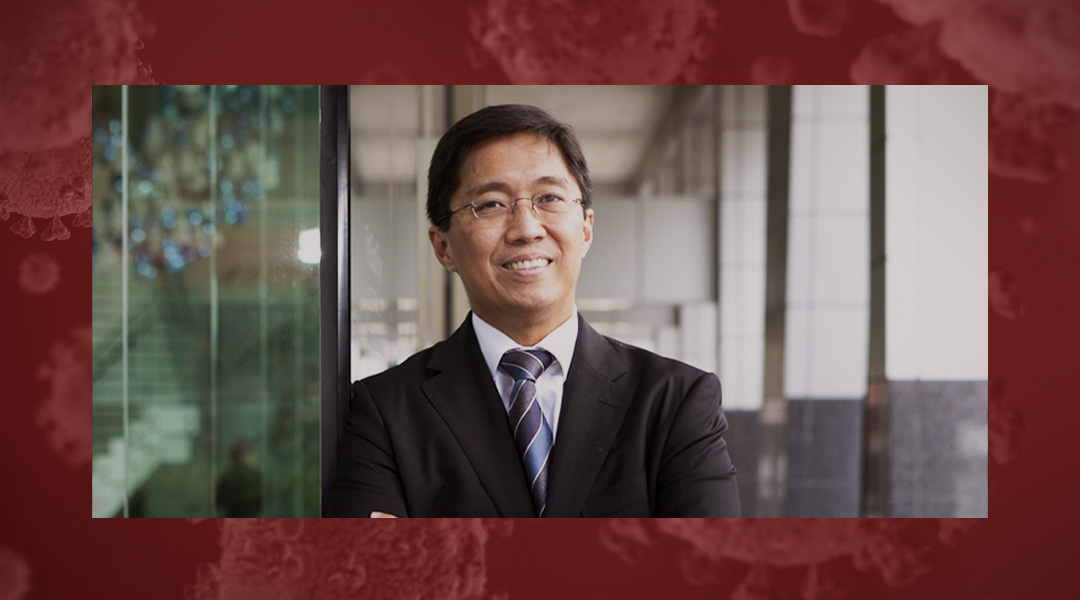
Aidea isn’t just ready for the new normal, but to build a much better one
I ask Aidea president and CEO Jojo Tolentino if his company is ready for the “new normal” and what thoughts keep him awake in the dark nights of the coronavirus pandemic. He replies: “As a company that thrives on change, we can’t help but remain optimistic for a future with a better normal.”
It’s not all that surprising he isn’t fazed by the chaos and confusion in our public affairs, the scarcity of evidence that government officials are doing everything they can to save lives, contain the spread of infection, protect our health workers, or even just mitigate the pain and suffering of bereaved families by helping provide a measure of dignity for those who pass away.
Tolentino told me in a previous interview: “The seeds of innovation thrive in times of danger. Without danger, there is no risk. Without risk, there is no need to change. Without the need to change, there is no need to innovate. The story of our company is one of risk-taking, of change, and of innovation.” He was talking about the dire straits the company was in when it was not yet Aidea but a failing 17-man Manila branch of British firm RMJM, floundering in the 1997 Asian Financial Crisis. The story of how he bought the practice when his British bosses wanted to close down the branch, rebranded it as Aidea, and grew it into the 45th largest architecture firm in the world is recorded in BluPrint’s Manifesto Special Issue in November 2018.
The unforgiving economic climate buffeted the foundling firm for several years with some hard blows, complicated by some skullduggery within (that is a story recounted only in private reminiscences by Tolentino and his trusted lieutenants who stood by him from RMJM days). But by sheer dint of determination and clear-headed risk-taking, the then 34-year old managing director turned president and CEO converted the traditional outsourcing firm into one of Asia’s most tech-advanced and innovative practices.
Tolentino’s equanimity in the face of a new normal that many find unnatural and upsetting comes from his successful dealings with financial danger in the past. And from the risks he has taken, time and again, in investing in advanced technologies others haven’t (yet) seen the need for. If he’s unfazed by the need to reinvent systems and operations in this strange new normal, it must be because he’s had almost 25 years’ practice of being a first mover and early adapter. This is not to say that he and his team are taking the coronavirus pandemic lightly. Covid-19 not only poses grave financial risks but also the risk of loss of life itself.
Thankfully, Aidea’s investments in technology are proving their worth in ways Tolentino and his techie gurus had never conceived they would. Because of technology, Aidea did not close down and Aideans stayed safe, even as the company remained fully operational during the lockdown, or as the Philippine government calls it, the “enhanced community quarantine” (ECQ). The company and its leadership are at the ready for when the firm ‘reopens’ on Monday, May 25, now that the ECQ has been downgraded to GCQ or general community quarantine.
Tolentino isn’t settling for simply surviving the new normal, though. It has got to be much better than this abnormal life we’re living. To that end, he says he and his team will be pushing tech and innovation as never before.
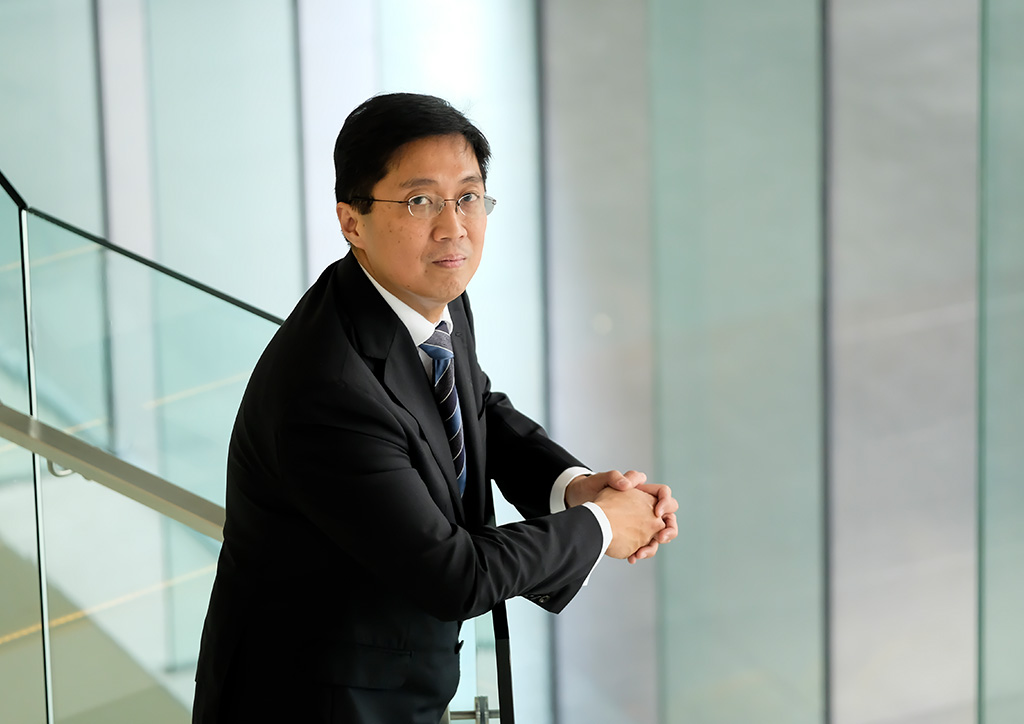
How has the practice been affected by the pandemic?
We quickly transitioned from working face-to-face to working from home (WFH) and conducting business virtually. We accepted the fact that we have to manage our work, teams, and clients differently since direct and personal interactions would be discontinued and instead handled remotely. As a design and technology practice, our investment in the latter enabled us to quickly adapt. We employed proactive measures to ensure that our workforce can work from anywhere and that all of our services—and meetings—can be performed virtually.
It was relatively easy for us to transition into complete WFH mode, as we have been working for years with globally dispersed project teams. The entire office shifted to a unified communication and collaboration platform that enabled persistent workplace chat, video meetings, file storage, and apps integration.
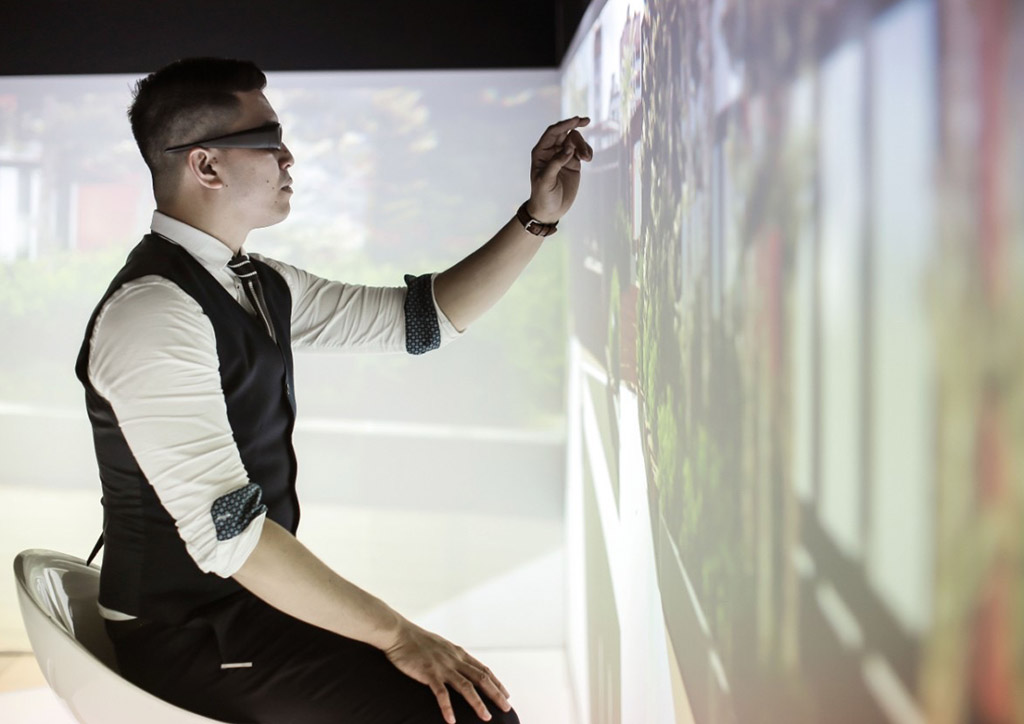
Which platform is this?
We use cloud collaboration platforms for BIM coordination with our project stakeholders. To remotely access our office workstations where all our programs are installed and files are kept, we use AnyDesk. Our planned migration to Office 365 also proved to be good timing. We quickly migrated to MS Teams for our daily coordination. Protocols and quick guides were developed and a helpdesk for all technology-related concerns was created.
There are partners who are not as technologically enabled as we are, so even if we wanted to move fast, we couldn’t because of their limitations. On the other hand, we have collaborations with international partners, and, for them, the mandate was to continue working as if there were no pandemic crisis. This is where we were able to optimize our work, especially at our office in Clark since that serves mostly international clients. They were able to deliver on time because of the infrastructure in place.
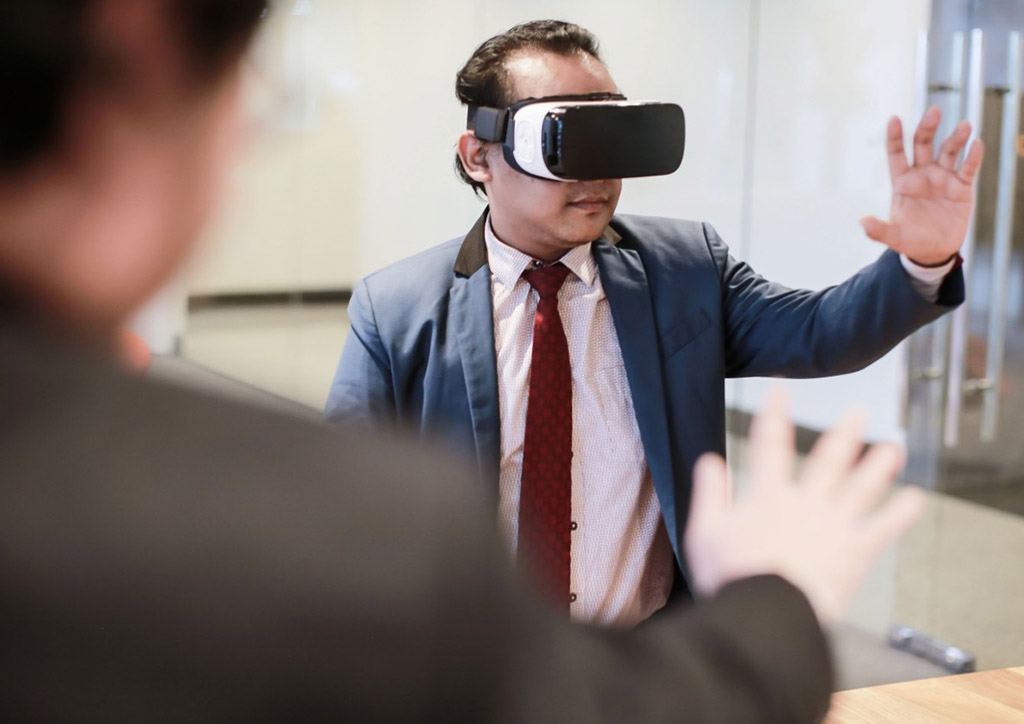
I’ve seen Aidea deal with international clients and consultants remotely, but how did you switch 200-plus employees to WFH? The last time I visited in 2018, the Makati branch had almost 200 employees and Clark, two-dozen.
We implemented the WFH arrangement for our 270 designers, programmers, and support staff both in Manila and Clark. With the help of our Technology, IT, and Facilities groups, we pivoted our infrastructure and processes to support our employees to fully perform all services and responsibilities from home. To prepare for the new normal, we surveyed each employee’s ability to effectively work remotely. Our office desktops were dismantled and, along with laptops and Wi-Fi routers, were distributed accordingly.
Wow, when did you do this?
We started this in the first week of the lockdown after we identified the status and capacity of our employees. The majority with their own computers and Internet connections immediately started working from home. The office provided computers and pocket Wi-Fi to enable everyone else. 95% of Aidea is working remotely and we are 100% operational. Our connectivity and use of cloud technology allow us to manage live projects and collaborate with similarly enabled firms.
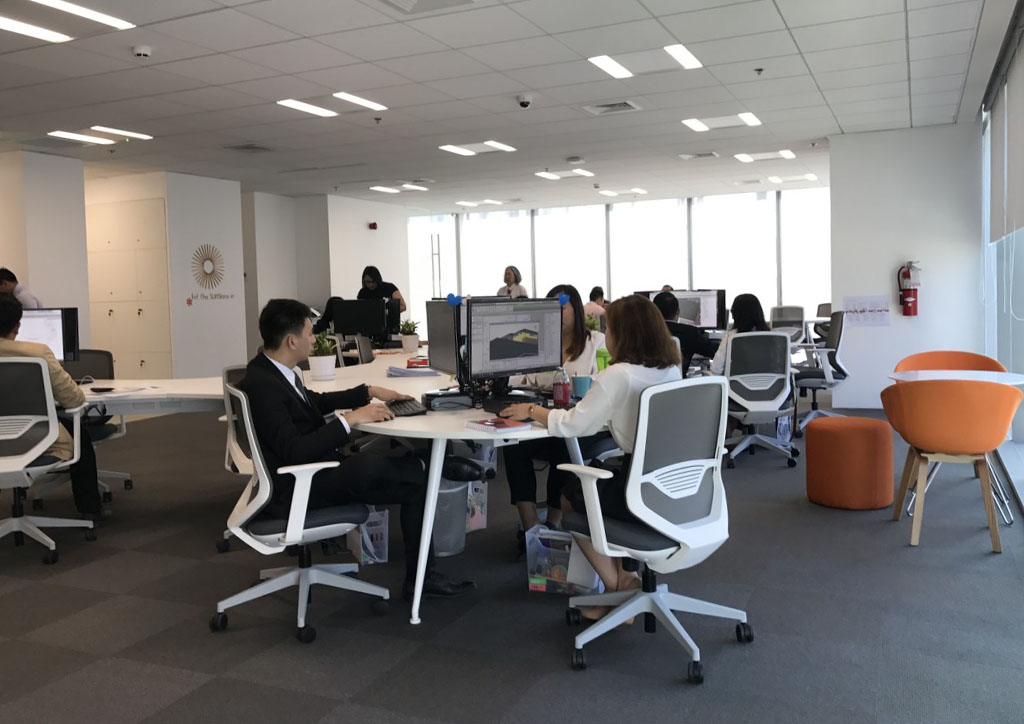
READ MORE: Reopening during a pandemic: Are architects ready for the new normal?
So, no scaling back of operations at all. Aidea didn’t let go of anyone?
No, we did not let go of anyone. Everyone remains employed. Our objective was not to reduce our numbers and, luckily, we have a healthy pipeline of work that enables us to continue despite the global crisis. Admittedly, there were projects that were canceled and suspended, but on the other hand, we have also been fortunate to secure new work during the ECQ (enhanced community quarantine).
Did you encounter problems with payment?
There were obviously delays in payment since some clients couldn’t report to work and issue checks or make the arrangements for us to be paid. But on our side, we were virtually monitoring our billings and despite the lockdown were able to issue our invoices to clients. We made sure that part of the business continued virtually, and that the client accepted this means for invoicing.
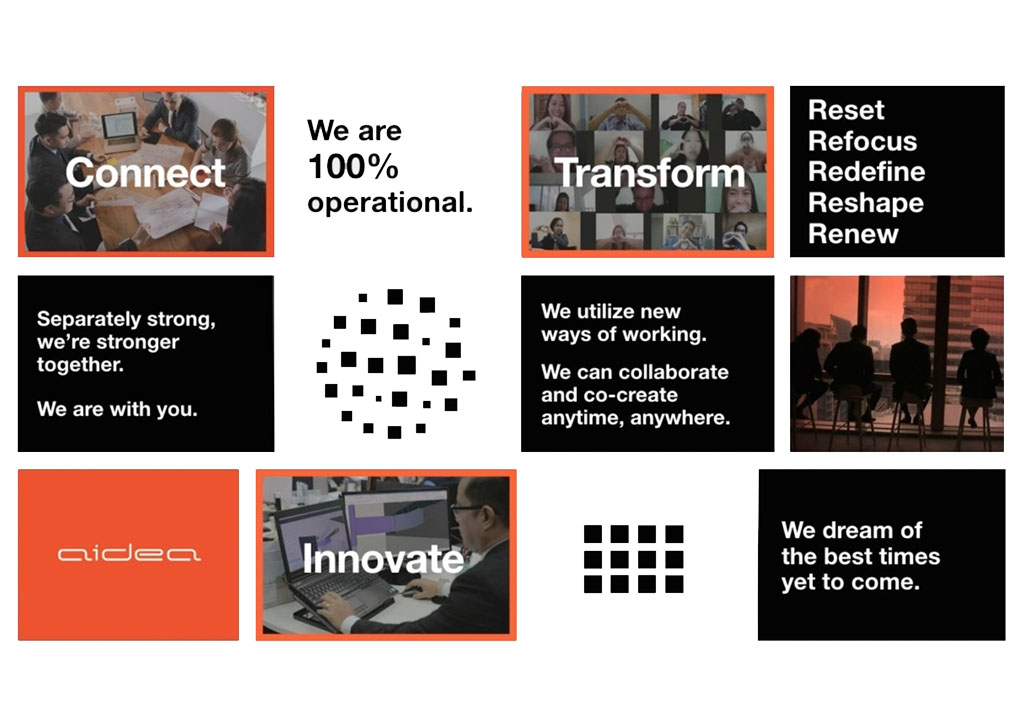
How do you manage client relations during a pandemic? What is Aidea doing to keep top-of-mind in the new normal?
Connectedness is central to our culture and we remained in touch with our clients and partners to let them know they would get the same level of support and service they are accustomed to. In this crisis, our goal is to be our partners’ source of support, solutions, and hope. We do our best to make them feel that we are one with them and share the same goals of protecting our communities and our businesses.
Communications both internal and external are crucial at this time. It is impossible to over-communicate during times of crisis. Even a short message to clients, partners, and employees can be highly reassuring.
WATCH: May 6, 2020, Aidea CEO Message to Partners
What did you communicate?
It was important for us to know whether our clients had any change in direction for their projects. All our Project Managers and Project Architects were instructed to contact our clients and discuss the best ways to progress on their projects. Of course, the responses varied. Those clients who see this crisis as temporary are determined to continue. On the other hand, there are a few who decided to put their projects on hold. We are always clear with our clients on what course they want to pursue.
We also wanted to make sure that they know we’re operational and that we’re supporting their projects so, during ECQ, all team leaders and their teams are busy holding conference calls discussing their projects. We have been busy during the lockdown and in many cases are busier than ever! Since we have to totally rely on virtual meetings, we have meetings constantly to cope with the demands of each project. Now that the ECQ is to be downgraded, we continue to communicate with our clients.
Internally, several weeks before the ECQ downgrade, we had already been talking about our post-ECQ scenario, preparing for the new normal, the objective of which is to keep our staff safe, our clients well-served, and secure business continuity.
WATCH: Aidea’s May 16, 2020 video, Post-Lockdown Strategy for External Partners
What strategies are you employing for continuity of business?
Due to COVID-19, there have been changes in market sectors. There are those that are badly hit but also, there are opportunities in sectors that will grow or show the potential for growth due to this pandemic. We are analyzing which sectors or industries show potential in the coming years despite the crisis, and which ones will slow down so that we can shift our focus towards the promising markets.
Which sectors are you looking at? Can you share one or two trends you anticipate in the new normal?
There are opportunities in the healthcare sector and in such industries as logistics, food manufacture, data centers, BPOs, and major government projects. With this crisis emerges a need for crisis architecture: pop-up medical facilities and isolation amenities that limit the spread of germs, for instance. There is a call for the adaptive reuse of large facilities such as sports complexes, convention facilities, and hotels.
It is vital for us to strengthen our sustainable design capabilities in order to create healthy environments that support user wellbeing. More than ever, we need to ensure that we incorporate more open, green spaces into large, mixed-use projects.
Aidea just finished its post-lockdown protocols. Can you share some details?
Our post-ECQ or new normal strategy operates on two priority principles: health and safety, and business continuity. We are currently configuring our office in line with current health concerns in anticipation of the lifting of the lockdown. The wellbeing of our employees is of utmost importance. New rules and regulations affecting daily routines shall be disseminated to all employees via our various communications platforms. We are suspending our agile setup to accommodate social distancing.
You were very often one of the first to arrive and the last to leave the office; you also often worked on holidays. Will you be coming in to work at the office daily?
Yes. In fact, I visited the office during lockdown since I live near the area.
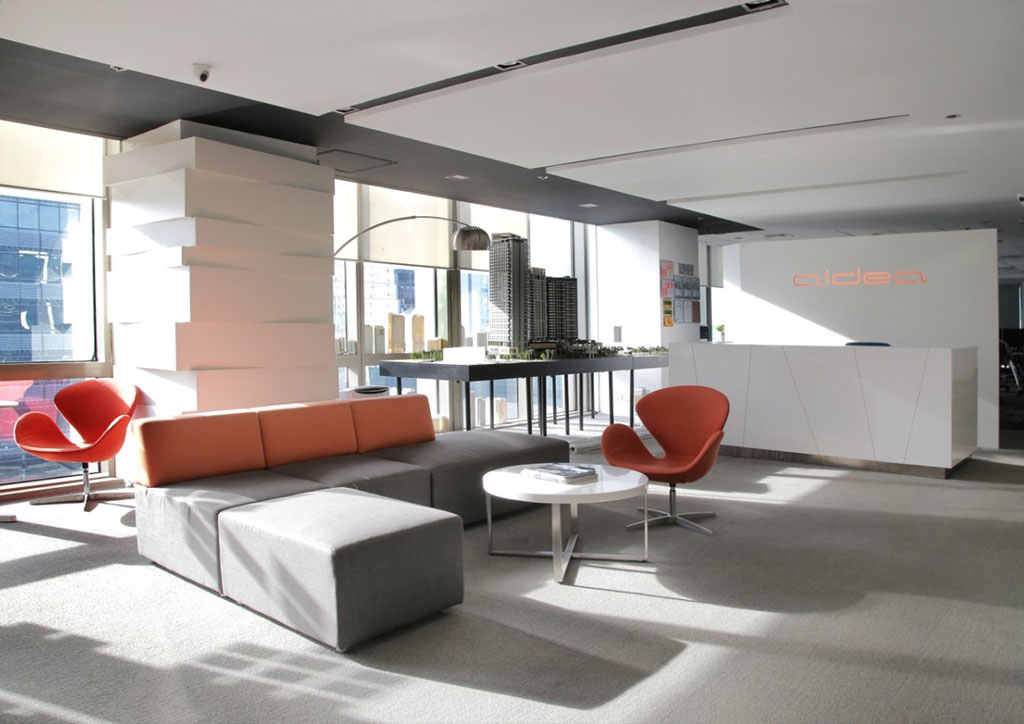
We are fortunate to have enough space to accommodate the prescribed distance between workers. We are minimizing all physical touch-points and are installing foot-controlled devices to minimize manual contact. We have also created new signage and other visual cues to help all personnel and guests to the office navigate these changes effectively and with ease.
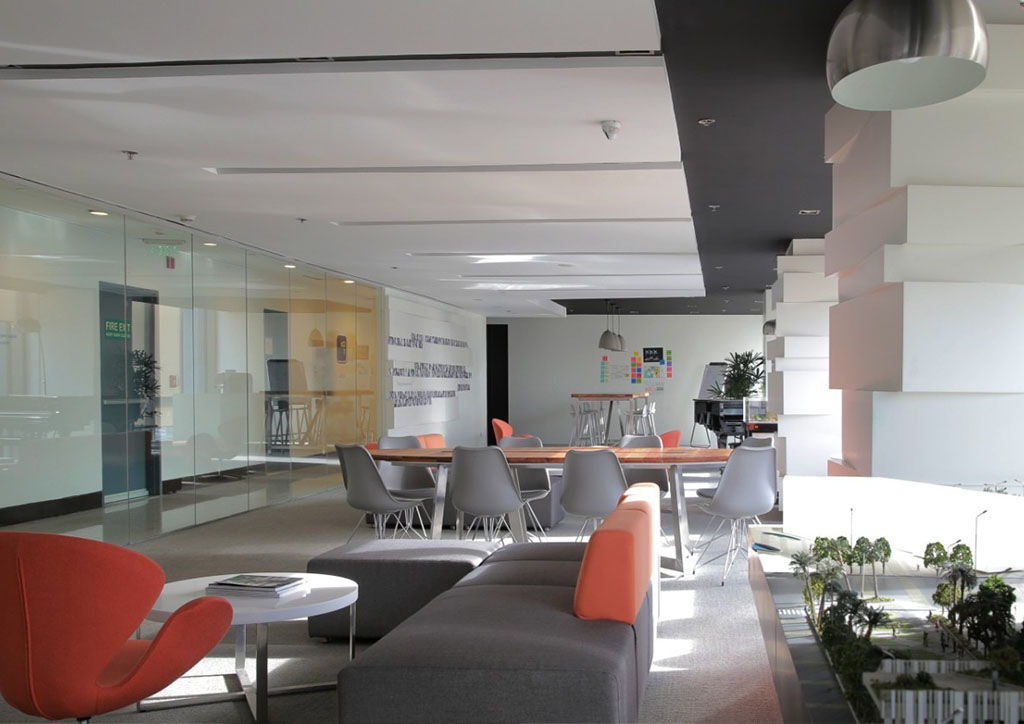
Medical consultations can be done online through our medical partners. Masks and disinfectant gel are provided for all employees; and since we contribute to the efforts to provide PPE 3D-printed face shields to the medical front liners, we will supply all staff members with protective face shields as well.

Tell me more about the face shields.
We were approached by one of our clients, Berck Cheng, to print face shield frames. Our technical team did rapid prototyping of face shield frame designs and once the most feasible design was determined, production went into full steam. We produced more than 700 frames. Some beneficiaries were St. Luke’s Medical Center (they are one of our clients) and other organizations and communities who requested our help. Some of our completed face shields even reached a hospital in Mindanao through our partnership with World Vision. Aidea is proud to join our many design colleagues in helping protect our frontline heroes.

What’s the most valuable learning experience from the pandemic?
First is that an organization needs to be agile enough that it can adapt to different ways of working. Since we are effectively able to work from home, I think we’ll adapt to a hybrid scenario in the new normal, where we won’t require all our people to go to the office initially. We’re thinking of allowing 50% of our staff to report for work and the remaining 50% can continue to work from home. This is to ensure that we can implement social distancing to keep our staff safe and at the same time, maintain business continuity. The key here is to strike the right balance.
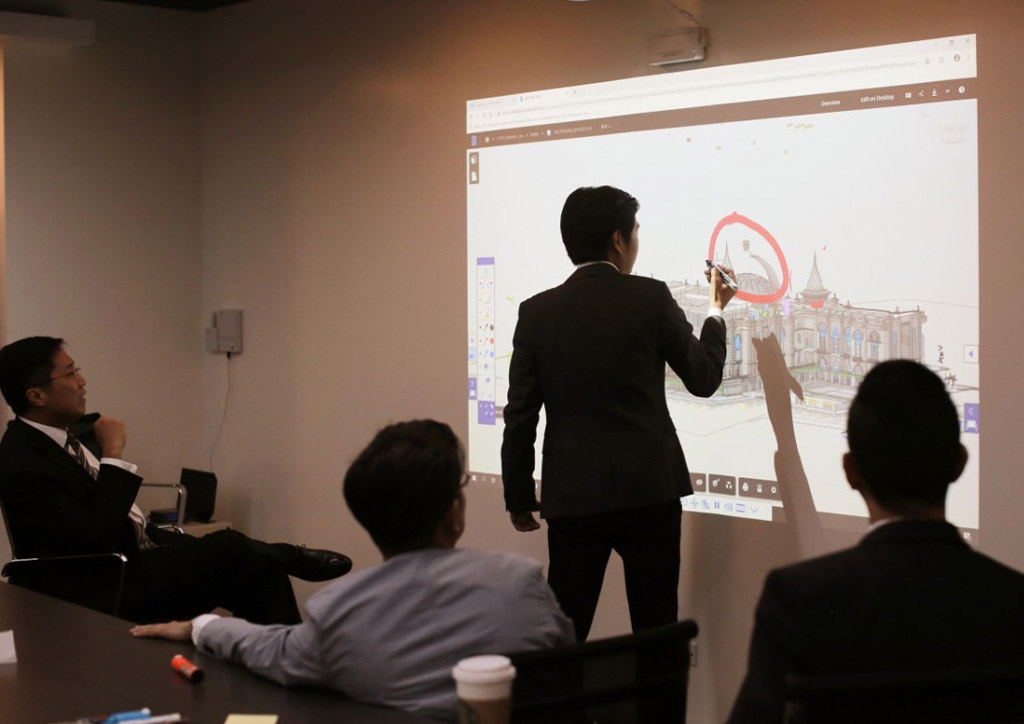
Second is that investment in technology is important. The digital transformation of an organization allows for work to be done anytime, anywhere, across borders. Our opportunities for international business actually increased in this pandemic. Working virtually has been validated by the global lockdown. The world now knows it works. The crisis broke a mindset against working remotely in a big way. As a result, we’ve been getting more inquiries now about borderless collaboration. For local projects where we collaborate with international firms, there have been no slowdowns or significant effects on delivery since this is how we’ve been working anyway pre-COVID-19.
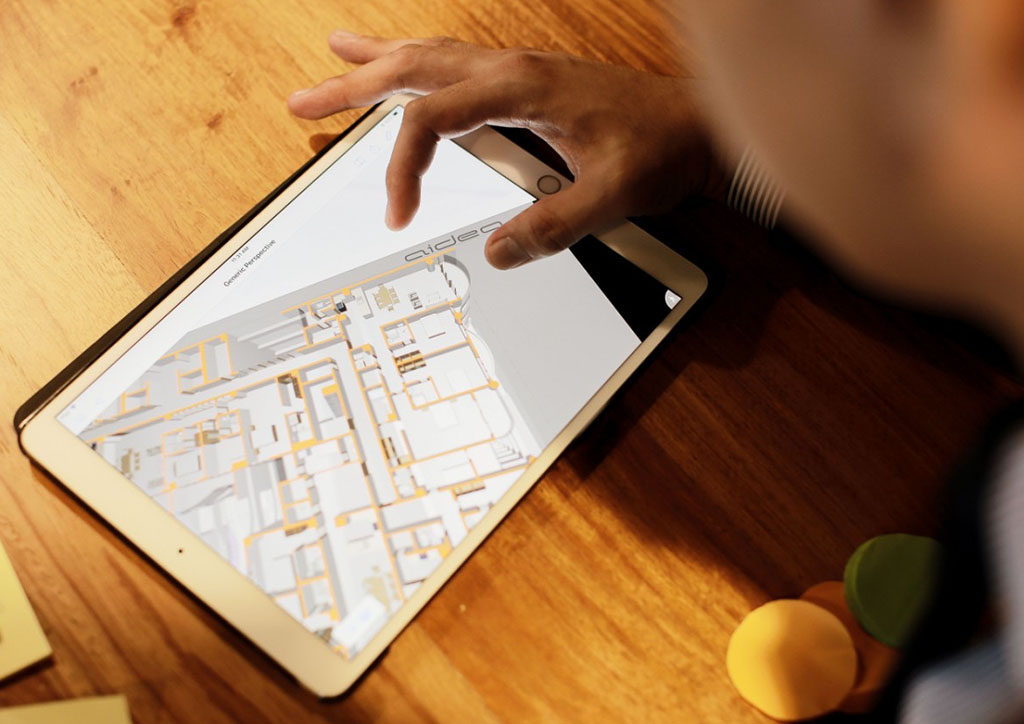
Third is to communicate these to our people and make sure they are fully on-board and that they understand our strategy; and to our clients and other external stakeholders for them to understand how we deliver our services in a crisis situation.
Lastly, in a crisis situation, there should be decisive leadership. By leadership, I mean not just the top person, but also our people who lead teams and manage projects. We all have to be in sync.
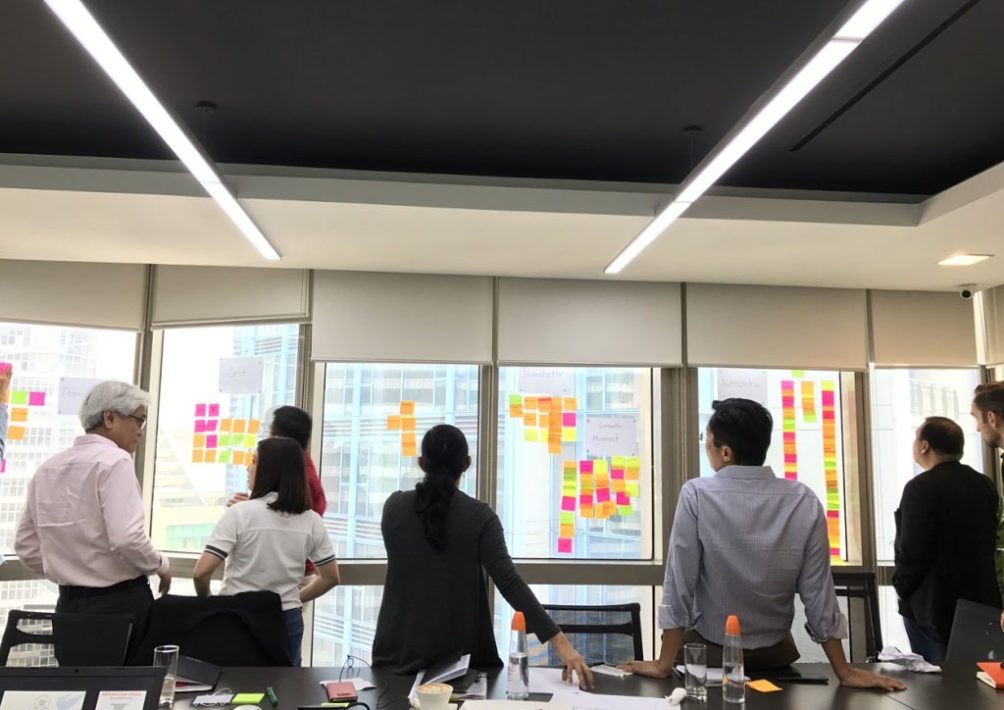
How are you managing your management team?
We have weekly virtual leadership meetings to anticipate upcoming scenarios and find ways to position ourselves accordingly. At Aidea, we give great importance to culture. We believe a strong, unified culture allows organizations to evolve, grow, and sustain relevance.
In 2019, we started our Culture Building Initiative. The Aidea Leadership Team took the initiative to undergo a series of deep-dive workshops with our Culture Consultant to redefine our vision, mission, and articulate the norms and behavior that drive us. We’re now in the third phase of our culture roadmap and have successfully conducted our first-ever virtual leadership workshop with our Culture Consultant facilitating from overseas. We firmly commit to continuing our initiative, even in this unique ‘new normal.’
READ MORE: Jojo Tolentino on developing young architects
How are you managing the people? I can’t forget the weekly breakfasts in the lobby for everybody; the quarterly acquaintance parties so everyone gets to meet the new employees and vice versa; the monthly training sessions with guest speakers, the frequent ‘Aideation’ sessions with all those Post-It notes! And my favorite time of the day—8:00 to 9:00 am—when the baby grand piano plays while employees catch up at the coffee bar in the morning. How do you maintain the Aidean culture in a WFH-based, physically-distanced new normal?
First, I hope all the employees can see and believe that the safety of our people is paramount. We can only make positive contributions and live our purpose and values if we stay healthy. We employ solutions to ensure that our employees are safe, healthy, and feel valued. Our people are our strength after all.
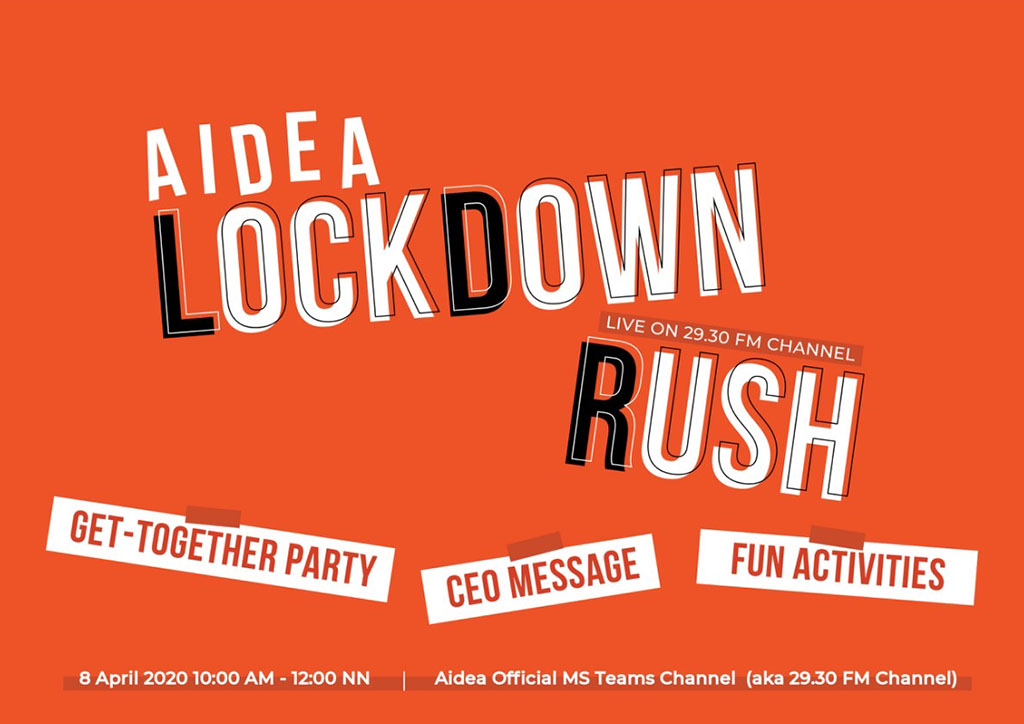
We launched a weekly virtual get-together called Aidea Lockdown Rush. This is our way of connecting with our people in a fun and light environment to help boost morale and spirits. We had live interviews with the leaders of the firm, introduced new employees, and even showcased talent and played games.
We also launched our Aidea Learning Center online initiative to promote continuing education and training for our employees. The online programs offer courses on design, technology, quality, and leadership. Next week will see our new learning series for Generative Design.
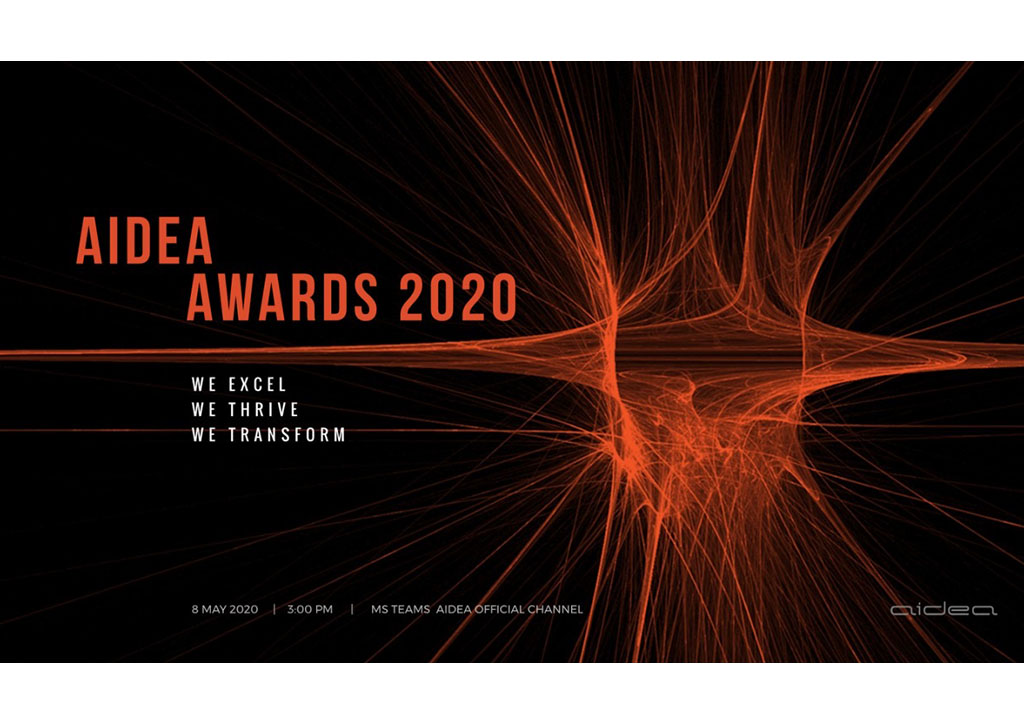
We also celebrated our first-ever virtual Aidea Awards. It is important to recognize the passion, dedication, and commitment of our people, especially in this trying time. They, in their own ways and contributions to the community, are our heroes.
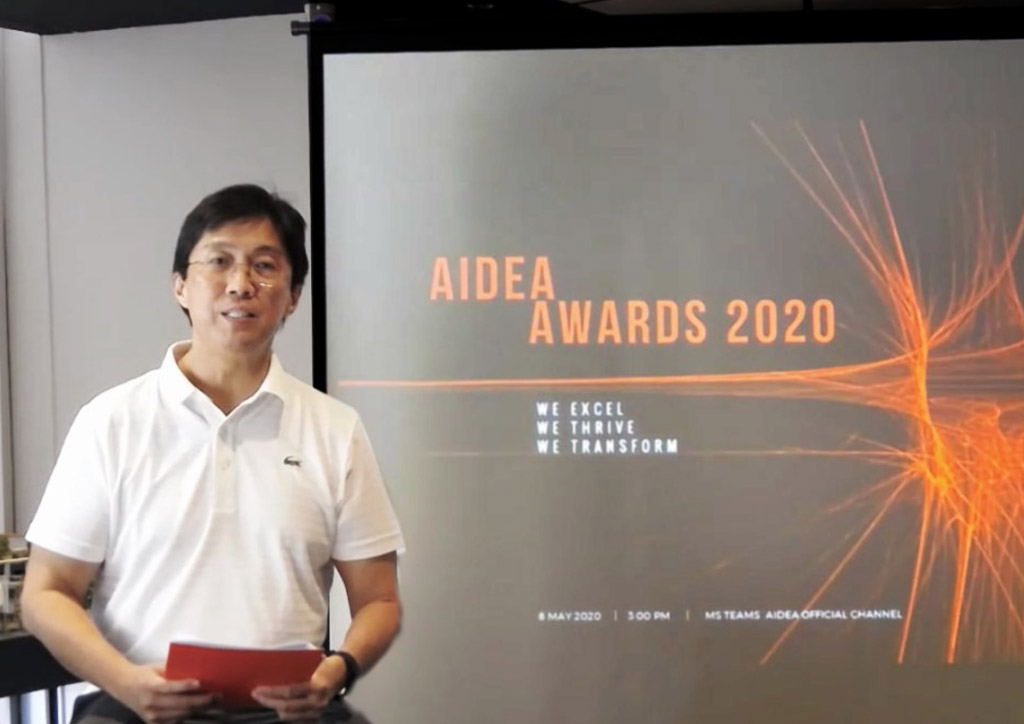
What impact would our experience of the lockdown, quarantine, physical distancing, and the concern for future pandemics have on planning, architecture, and design?
Obviously, we have to reassess the way we design buildings, especially since most of our projects are commercial and high density. We need to reconsider what features should be incorporated in our designs to make sure that they’re safe not only during natural calamities but now in terms of pandemics too. This involves not only the architects but all stakeholders in a building project.
READ MORE: The Finance Centre is a tonic to the rest of BGC’s skyline of glass cuboids
Last thoughts? What keeps you up at night?
Every crisis situation presents opportunities. We remain positive and look for the silver lining in this pandemic, and they are there. Focus on how the market will shift and identify priority sectors, then we can configure our service to cater to these emerging opportunities.
Second, we have to think long term. This pandemic will not be here forever. We’ll see the horizon and adjust our business strategy to cope with the road ahead. More than ever, we are convinced that our direction to become not just a design but also a technology firm will open opportunities for our business. As a company that thrives on change, we can’t help but remain optimistic for a future with a better normal.
I’ve always known you to be positive, Jojo, but tell me, what in particular keeps you inspired in these dark days of the pandemic?
The worst situations tend to bring out the best in people. In every moment of darkness, there are countless instances of light—acts of humanity and compassion that allow people to reveal who they are and what matters to them. We continue to be inspired by the front liners in the thick of this battle who risk everything in order to save others.
This global crisis coincides with our silver anniversary year. Before the pandemic, we wanted to host a sequence of meaningful events to commemorate our growth instead of just indulging in revelry.
The current situation compels us to recognize what CAN be done. It moves us to live up to the bravery that inspires us, to work harder and smarter to surmount challenges that we couldn’t have imagined a year ago. We can’t think of a better way to commemorate a milestone than to rise to this unprecedented occasion.
Thank you, Jojo. See you on the other side! Let’s make the new normal a better normal, indeed.
Editor’s notes: During a 16-month hiatus as editor-in-chief of BluPrint, the author, Judith Torres, served as a communications consultant for one year at Aidea, Inc.
Watch out for our next article on proposals by SOM director Ame Englehart for pandemic-safe design, and trends by Jone Lang LaSalle research head, on trends in Manila real estate.
Watch out also for a series of webinars on Architecture and Design in the new and better normal, at 2:00 pm on June 5, 16, 30, and July 8.


